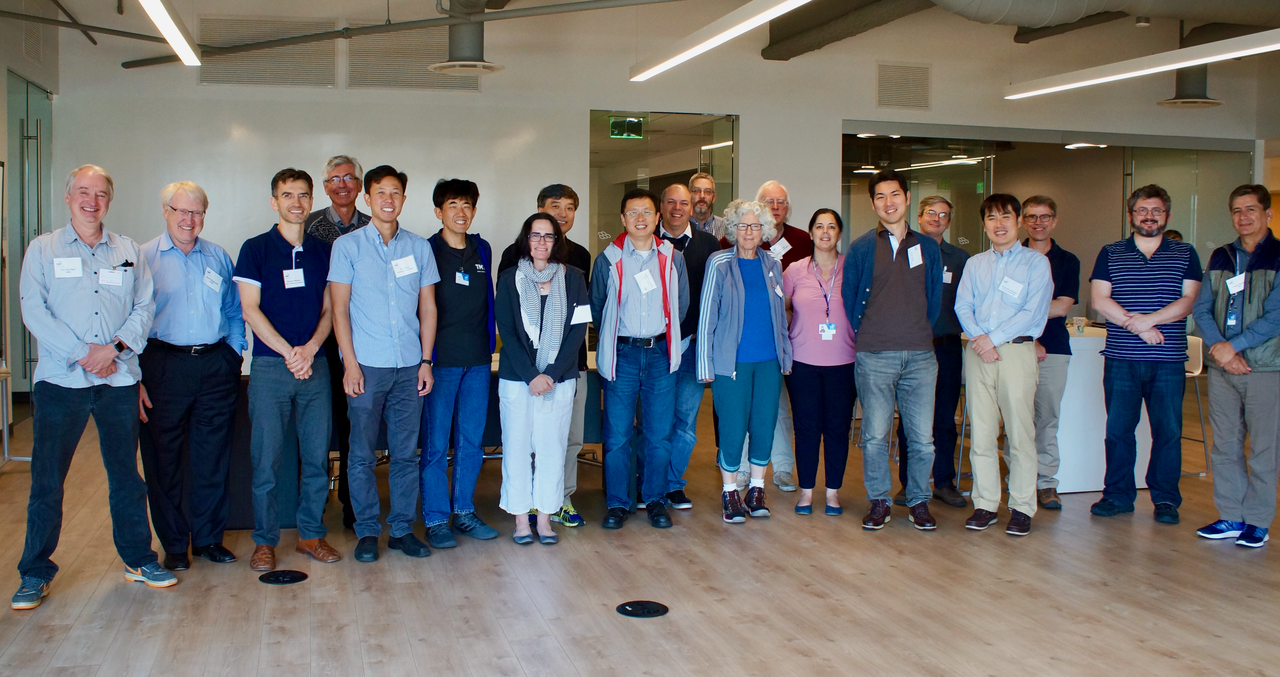
TMT Science Advisory Committee (SAC) meeting participants at the TMT International Observatory Headquarters in Pasadena – 9 July 2019. Image Credit: TMT International Observatory


TMT Science Advisory Committee (SAC) meeting participants at the TMT International Observatory Headquarters in Pasadena – 9 July 2019. Image Credit: TMT International Observatory
Pasadena, CA – July 10, 2019 – TMT Science Advisory Committee (SAC) members and project office scientists recently met in Pasadena. The meeting kicked off with a project update by TMT Project Manager Gary Sanders.
Said Tommaso Treu, TMT SAC Chair: “The SAC is truly appreciative of the challenges associated with the re-start of construction and would like to express its profound gratitude to the Project team, the Board, and everyone who is working hard on this difficult issue.”
During the two-day meeting, SAC representatives from all TMT partners and scientists from the project office discussed instrument capabilities and prioritization, an essential step for developing an effective and balanced TMT’s instrumentation development program.
Among the TMT instruments discussed were the early light instruments expected to be available at the start of TMT science operations: the InfraRed Imaging Spectrometer (IRIS), the Wide-Field Optical Spectrometer (WFOS), and the Multi-fiber High-resolution NIR spectrometer (MODHIS). These three first-light instruments will provide multi-object deep optical spectroscopy, near-IR imaging and spectroscopy at the diffraction limit, and very high resolution near-IR spectroscopy to enable exoplanet characterization, among other capabilities.
Also discussed were TMT’s next-generation instruments, expected to be commissioned within the first decade of TMT operations. The SAC is currently in the process of considering and evaluating the instrument roadmap that will best ensure the scientific legacy of TMT. The first decade instruments include: The High-Resolution Optical Spectrometer (HROS), the Planetary System Imager (PSI), the Mid-Infrared Camera-High-disperser-Integral field spectrograph (MICHI), the Near-InfraRed Echelle Spectrometer (NIRES), and a Multi-IFU imaging spectrometer (IRMOS), among others.
The TMT observatory is being designed with a powerful and adaptive instrumentation suite that will enable exploration of scientific questions that may arise during the first decade of operations, as well as new science that scientists haven’t yet dreamed.
Participants also got an update on the U.S. Extremely Large Telescope Program (US-ELTP). The National Optical Astronomy Observatory (NOAO), the Giant Magellan Telescope Organization (GMTO), and the Thirty Meter Telescope International Observatory (TIO) are working collaboratively to develop the US-ELTP. This 2-telescope/2-hemisphere ELT system would provide the opportunity to significantly broaden U.S. public access to the next generation of optical-infrared telescopes and secure strong U.S. leadership for decades to come.
A SAC subcommittee with focus on TMT operations also reported its findings and recommendations to the SAC. TMT must be operated in a manner that is efficient and will allow science programs to be implemented with as few impediments as possible. The charge of this working group is to review TMT’s operations model to maximize its science output, taking into account cost considerations, impact on science program implementation, instrumentation phasing, and TMT users. This working group will also serve as SAC liaison to the Project during the construction of TMT.
The meeting also covered the organization of the next TMT Science Forum to be held on the island of Xiamen, China, in November 2019. Instrument workshops are being planned at the Science & Art Center of Xiamen University during the days preceding the Forum. The theme of the this year’s forum is “Science synergies in the era of the Thirty Meter Telescope”. A special emphasis will be placed on scientific synergies between TMT and space-/ground-based facilities operating in the 2030s, especially facilities with a strong involvement from China such as the Square-Kilometer-Array (SKA), the Five-hundred-meter Aperture Spherical Telescope (FAST), The Chinese Space Station Telescope (CSST), Einstein Probe or the enhanced X-ray Timing and Polarimetry Mission (eXTP).
GOVERNOR’S OFFICE – JOINT NEWS RELEASE – THIRTY METER TELESCOPE SET TO START CONSTRUCTION
News about TMT in Hawaii